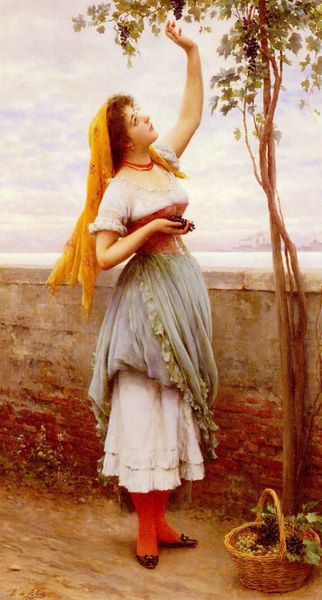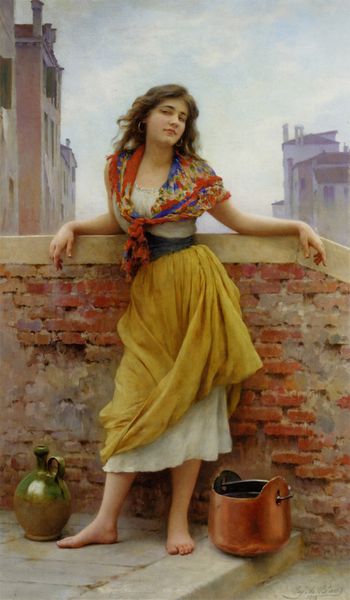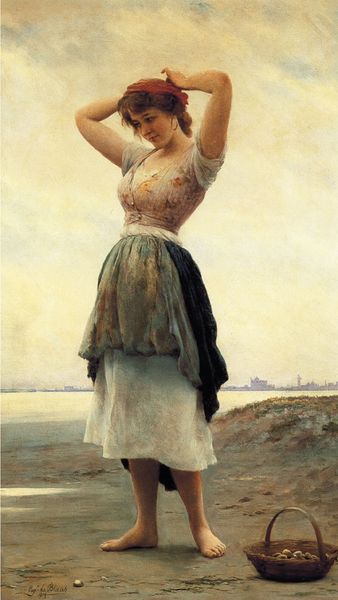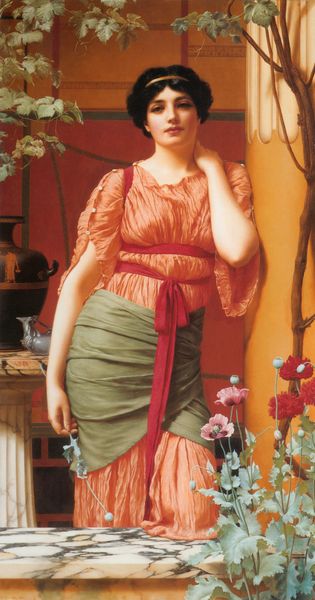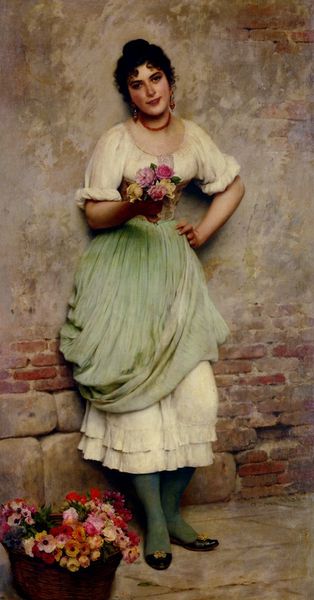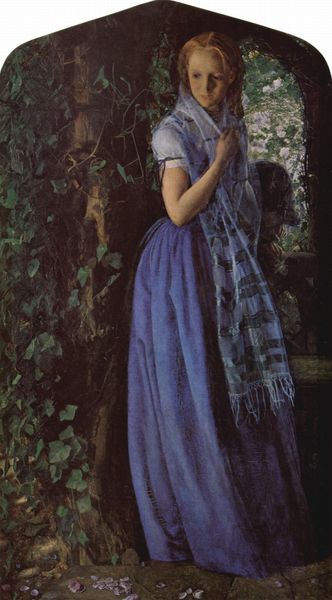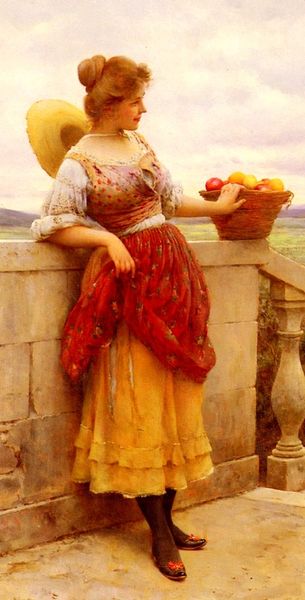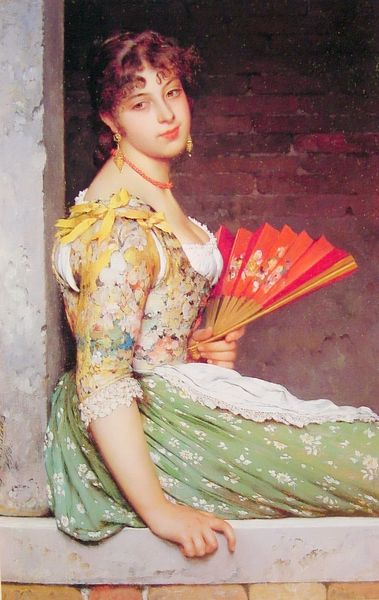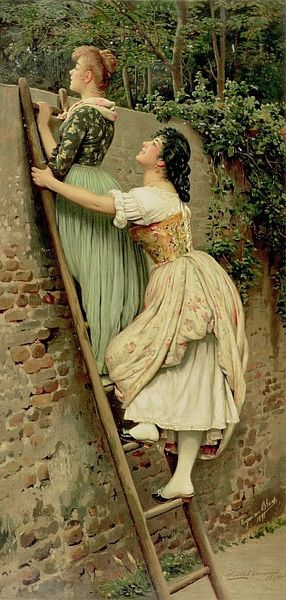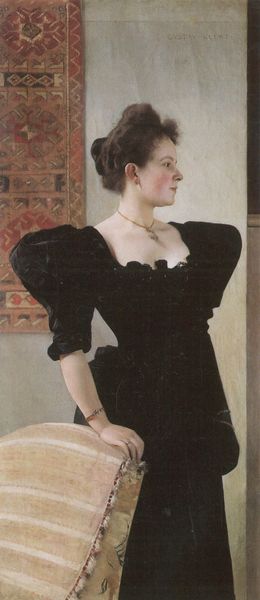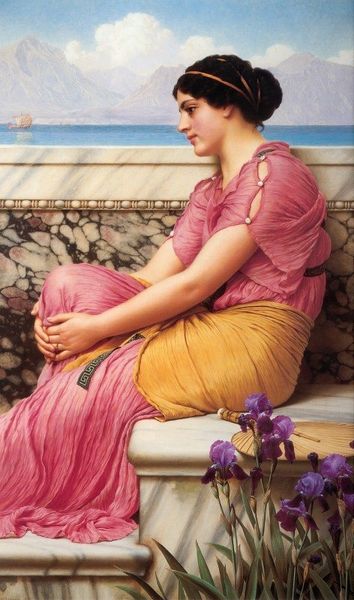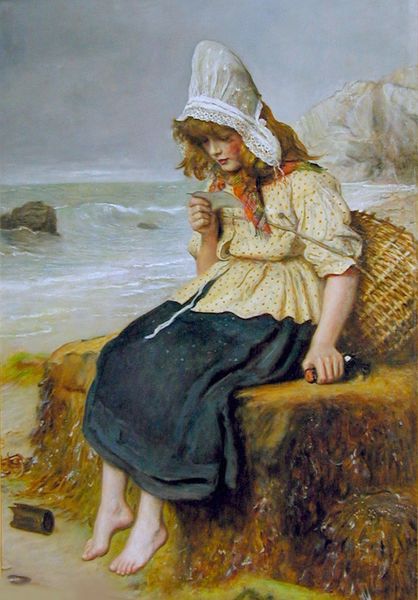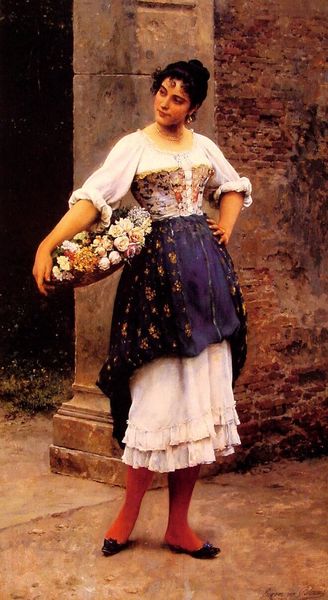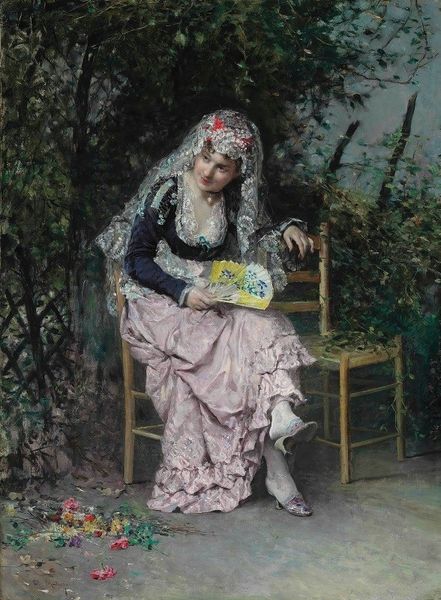
Dimensions: 53.5 x 85 cm
Copyright: Public domain
Curator: Welcome. We’re standing before Eugene de Blaas's "A Pensive Moment," created in 1896 using gouache. Editor: There’s such a quiet sadness to this piece. The girl is lovely, of course, but it's the lonely shoe cast aside, the weight in her posture. All seems…heavy, with untold stories lingering in the background. Curator: That weight you sense is interesting, because de Blaas often depicted women in scenes of leisure. But let’s look at the context here. De Blaas painted in Venice, often idealizing Venetian life, particularly of the working class. However, this period also coincided with social changes and increasing economic pressures impacting women. Editor: Yes, and note the deliberate positioning of the fruit basket at the base of the frame, juxtaposed with the sandal placed a slight distance from the seated figure. Those symbols create a certain resonance—suggesting abundance, but also choices made, perhaps opportunities abandoned? Is she contemplating marriage, or the limitations placed on women's labor? Curator: It's possible to view her ‘pensiveness’ not merely as romance, but rather the crossroads of labor, gender expectations, and societal change. The landscape, barely there on the horizon, reinforces this idea. What possibilities does it represent, or deny, to her? The pink sash around her waist almost divides the painting in two! Editor: Absolutely! And the way she's elevated – placed above both the basket of plenty, as well as her sandal - gives her this in-between status, but also this quiet moment to assert whatever power is afforded. It brings to mind the myths around figures like Psyche - her burdens, beauty, potential flight... She's no longer one thing. Curator: Exactly. It prompts questions regarding agency and visibility, questioning the romanticized roles that women were assigned. What does her gaze beyond the wall suggest about that limitation? Editor: This reminds us that even seemingly idyllic genre paintings can hold powerful layers of symbolism when examined with an eye toward broader cultural dynamics. The painting shifts. Curator: It certainly encourages us to explore beyond initial impressions, unveiling complex negotiations of gender, class, and expectation within the historical canvas. There’s real insight hiding in plain sight!
Comments
No comments
Be the first to comment and join the conversation on the ultimate creative platform.
